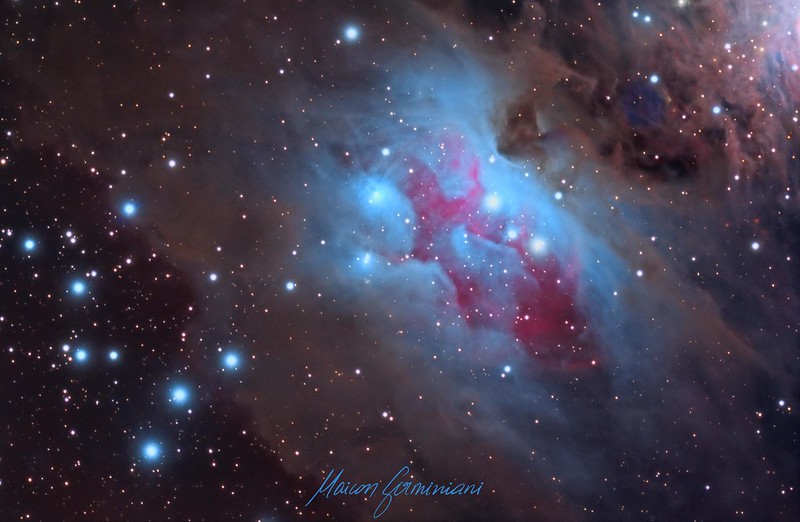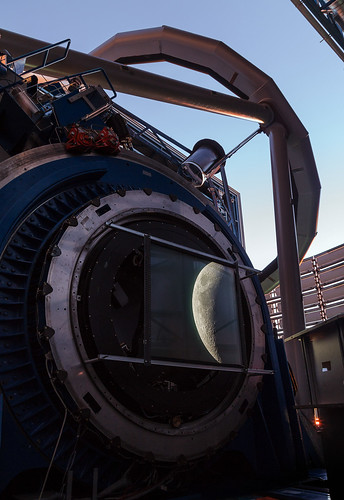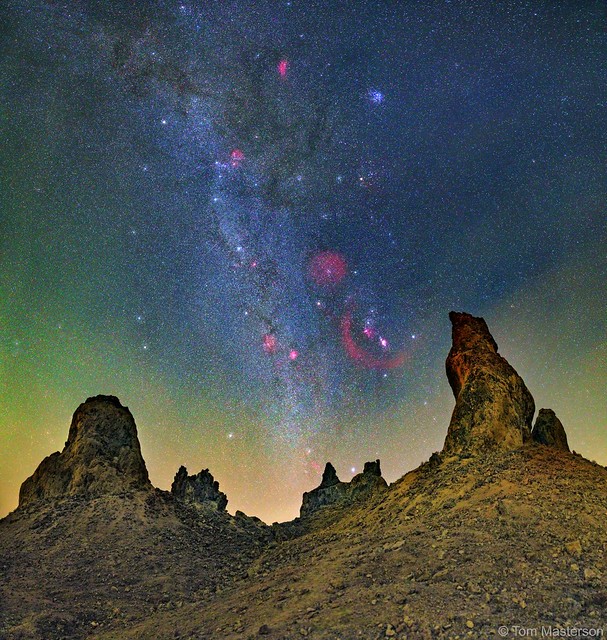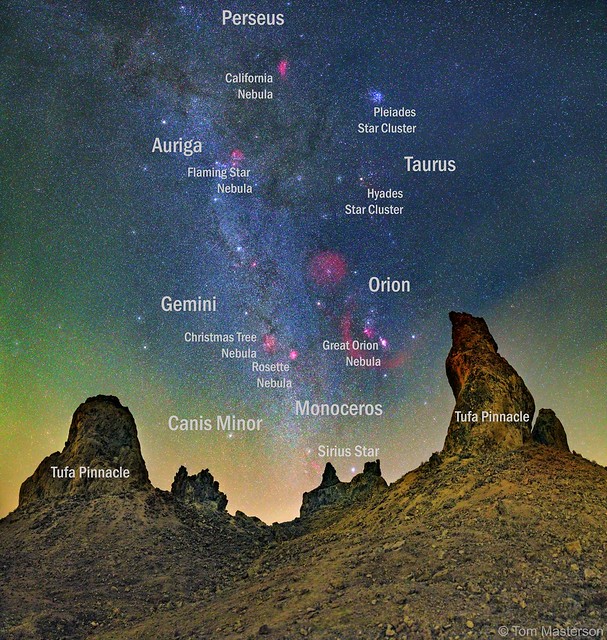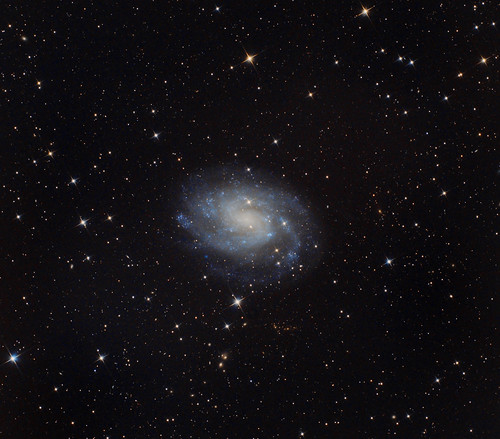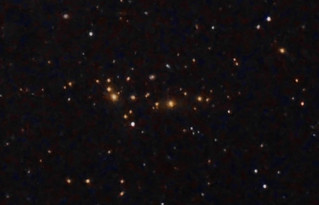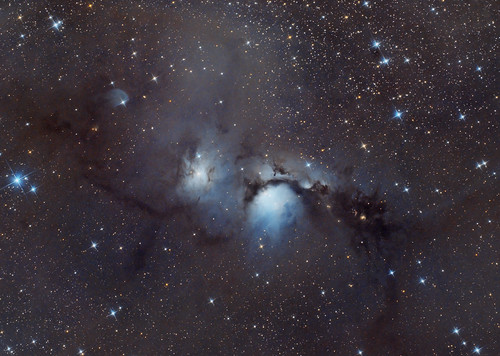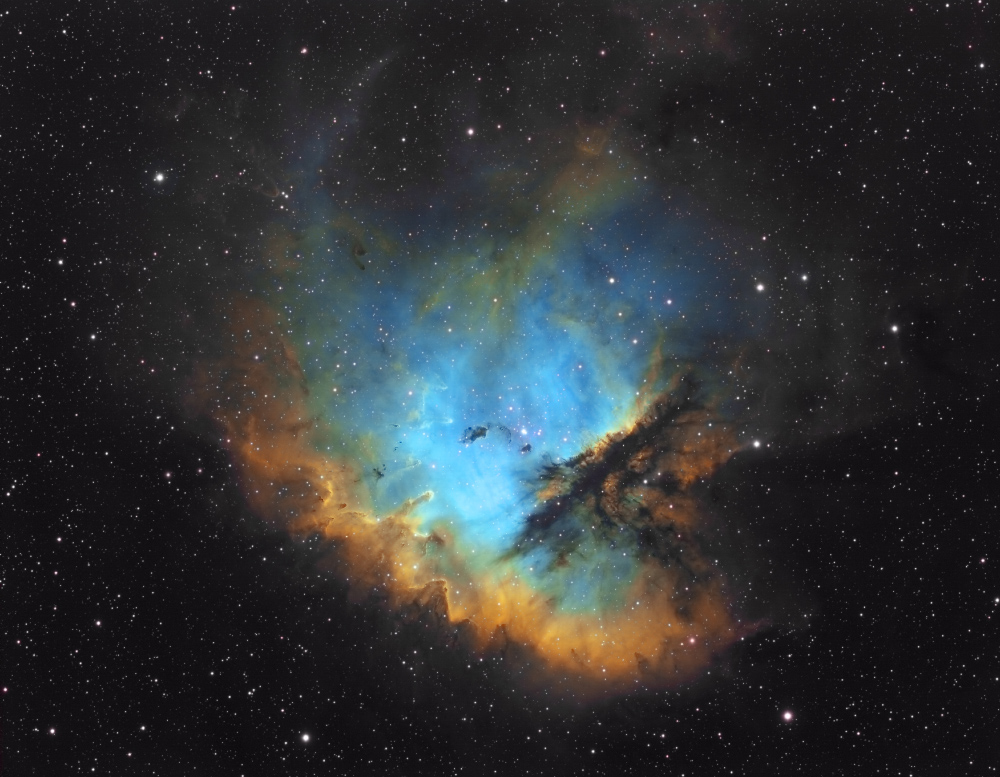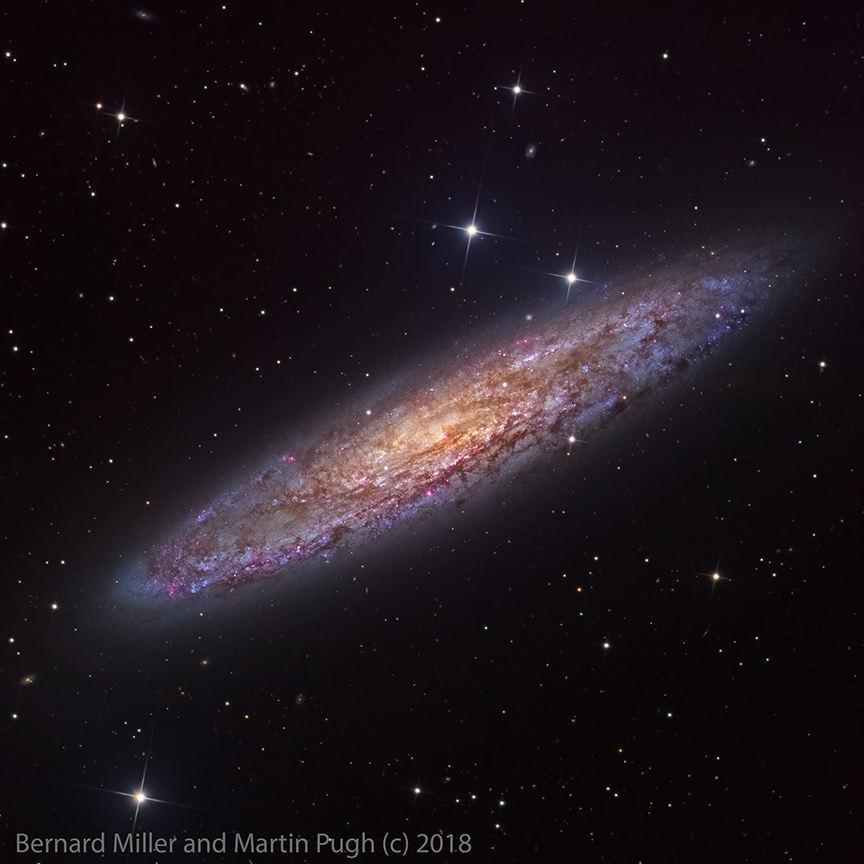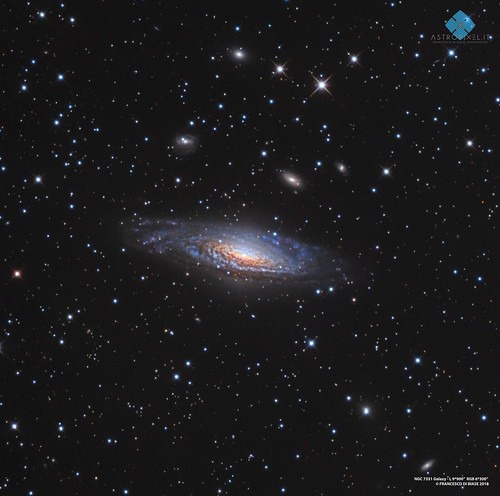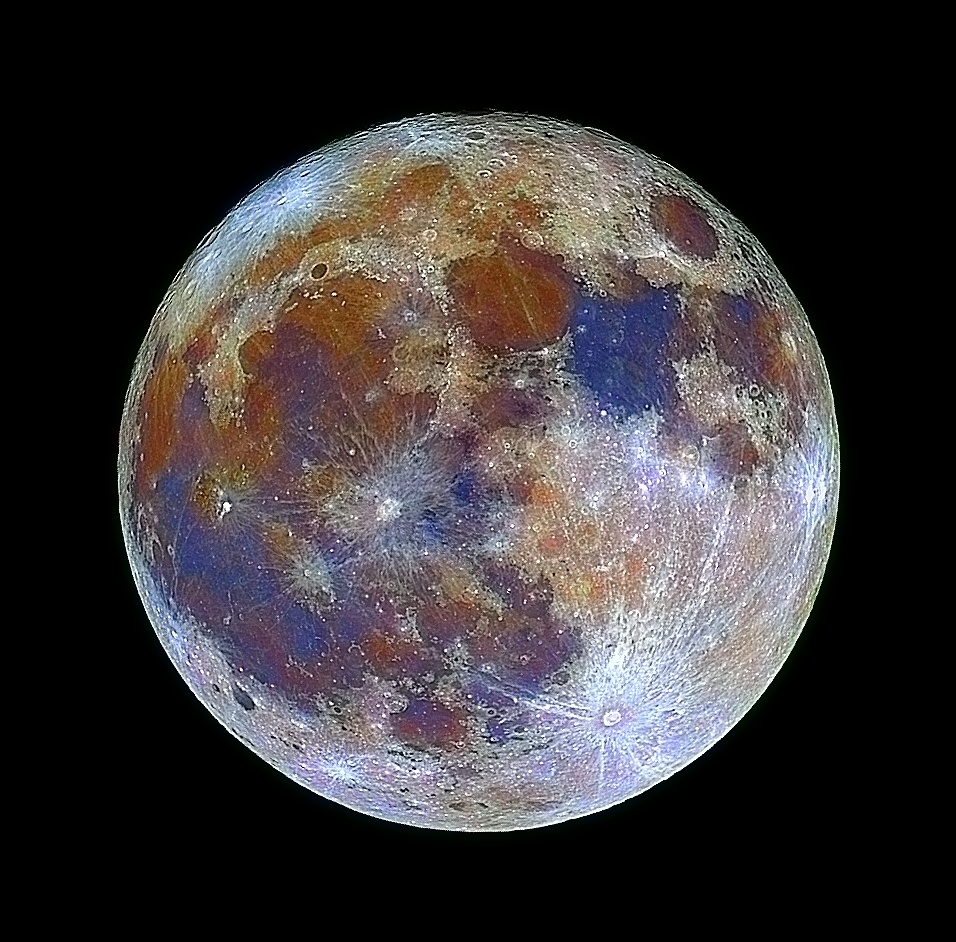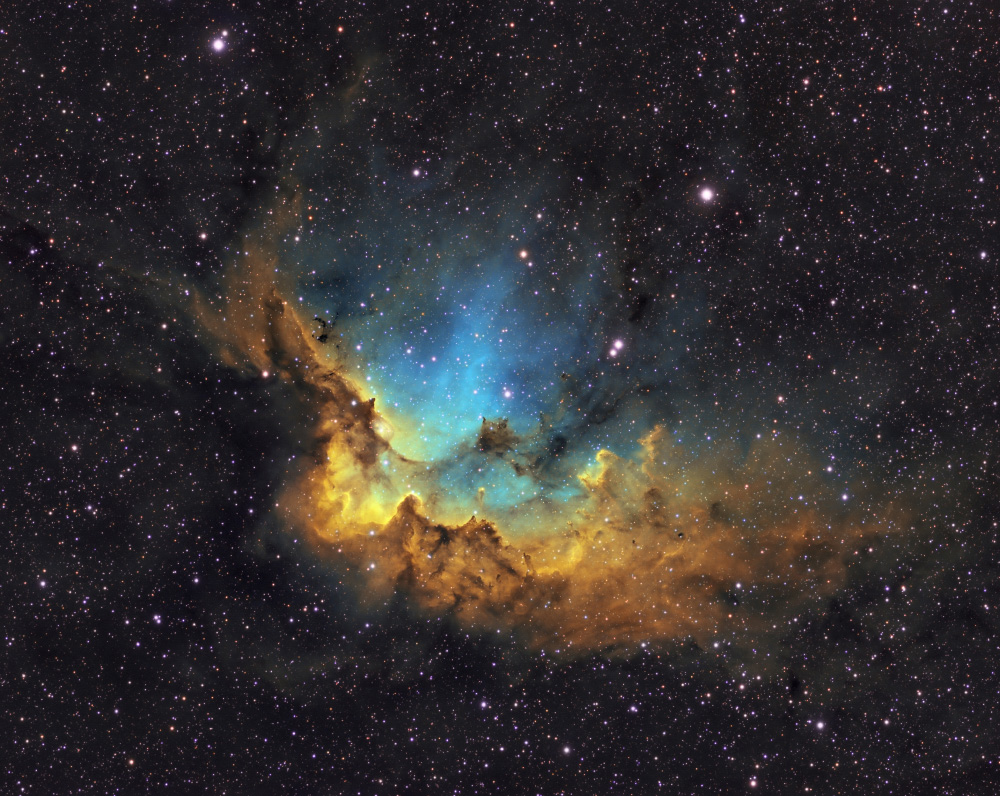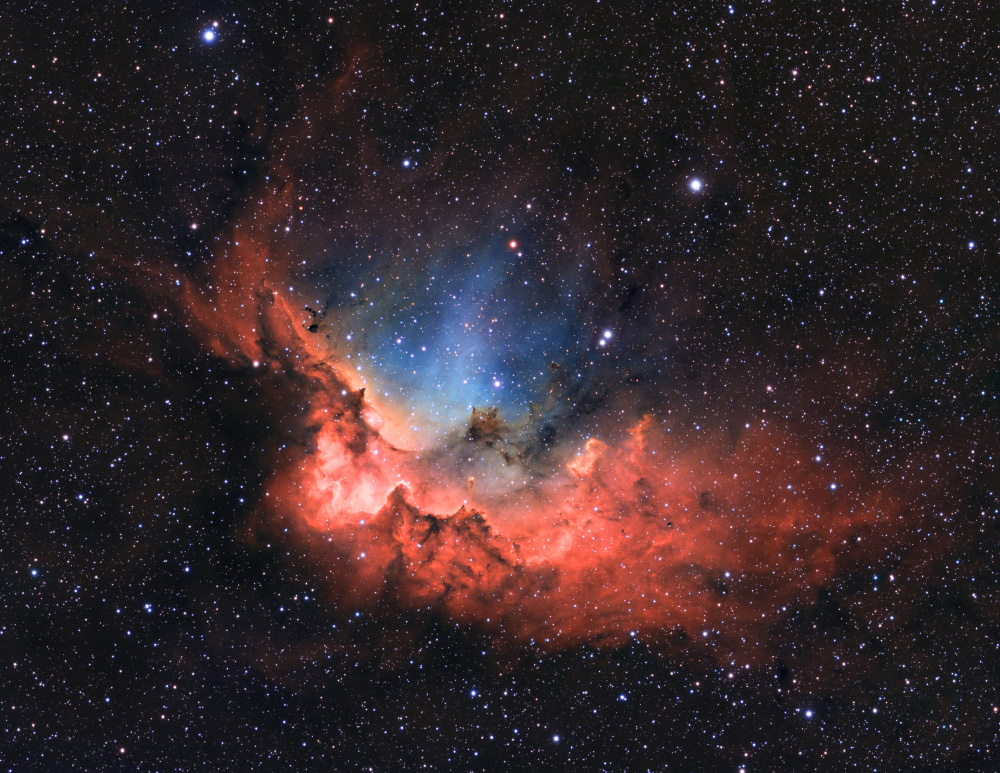markh@tds.net wrote: ↑Thu Nov 15, 2018 1:50 am
Three Giant Leaps
Image Credit & Copyright: Mark Hanson
Arp284FinalApodsmall.jpg
Labeled Version
Crop Labels.jpg
Description by Brian Ottum
Three different objects in this image demonstrate the immensity of the known universe. The bright star is 16 Piscium, located just 100 light-years from Earth, within our home Milky Way galaxy.
The pair of interacting galaxies (Arp 284) are a thousand times further away than the bright star, 100 million light-years from Earth.
Finally, the tiny blue quasar's (B2333+019A) & (B2334+019A) are a hundred times further away than the pair of galaxies at 10 and 11 billion light-years from Earth.
The 3 different objects demonstrate the immense power of gravity.
1. The bright star creates light through gravity-generated fusion.
2. Gravity is pulling the pair of galaxies Arp 284 also known as (NGC 7714 and NGC 7715) toward each other, gradually tearing them apart in the process.
3. Finally, 2 separate super massive black holes have so much gravitational pull that it is vacuuming up its host galaxy, allowing only an extremely bright jet of light (the 2 quasars) to escape and be blasted towards Earth.
We are seeing light that started its journey when the universe was relatively young at just 3 billion years old.
Full Resolution image can be found here:
https://www.hansonastronomy.com/arp-284-quasars
Thank you for looking,
Mark Hanson
That is utterly amazing!!!


As a color commentator, I had to "color diagnose" the bright star and the galaxies and apply my amateur diagnosis on the color of the quasars.
The star, 16 Psc, is an F6V type of star, and it is a bit bluer than the Sun. If it were to replace the Sun in the Solar system, it would pretty much instantly kill us because it is four times brighter and a lot more ultraviolet than the Sun. But just before we passed out, we might be able to notice that, yes, it does appear to be about this shade of blue-white to our G-type Sun-adapted eyes. So the color of the star is fine!
As for the galaxies, NGC 7714 and NGC 7715, my software Guide, quoting Principal Galaxy Catalog, claims that the B-V color of NGC 7714, the face-on galaxy, is as blue as 0.520. That is really quite blue for a galaxy, and I don't think that the galaxy looks as blue as that in your picture. NGC 7714 has a bright and reddish inner disk and a non-starforming bright outer arc-shaped arm of an intermediate color. To produce an overall "galaxy light" that is as blue as 0.520, even though the galaxy contains such a large number of old yellow stars, those brilliant blue stars of NGC 7714 had better be very blue indeed. Perhaps there are a lot of brilliant blue stars hidden in the glaring light of the nucleus?
Well, The Principal Galaxy Catalog got one thing right. NGC 7714 is really quite blue, but it is tremendously ultraviolet! That is exactly what you would expect from a galaxy with a tremendous burst of star formation superposed on a relatively large and bright old yellow population.
NGC 7715, the edge-on galaxy, has a bluer B-V index than NGC 7714. To me NGC 7715 in your picture appears to lack an old yellow population altogether!
Finally, the quasars. Their blue color is due to highly redshifted extremely energetic far ultraviolet light produced by the accretion disks of the supermassive black holes. I once saw a sequence of pictures showing what apparent color you would expect from quasars at different redshifts, and if I remember correctly, quasars at a distance of 10 and 11 billion light-years would still display a bluish B-V index if we measured their light from the Earth.
What a fantastic picture! Thank you!
Ann
Eta Carinae LRGB by maicon germiniani, no Flickr[/img3]

